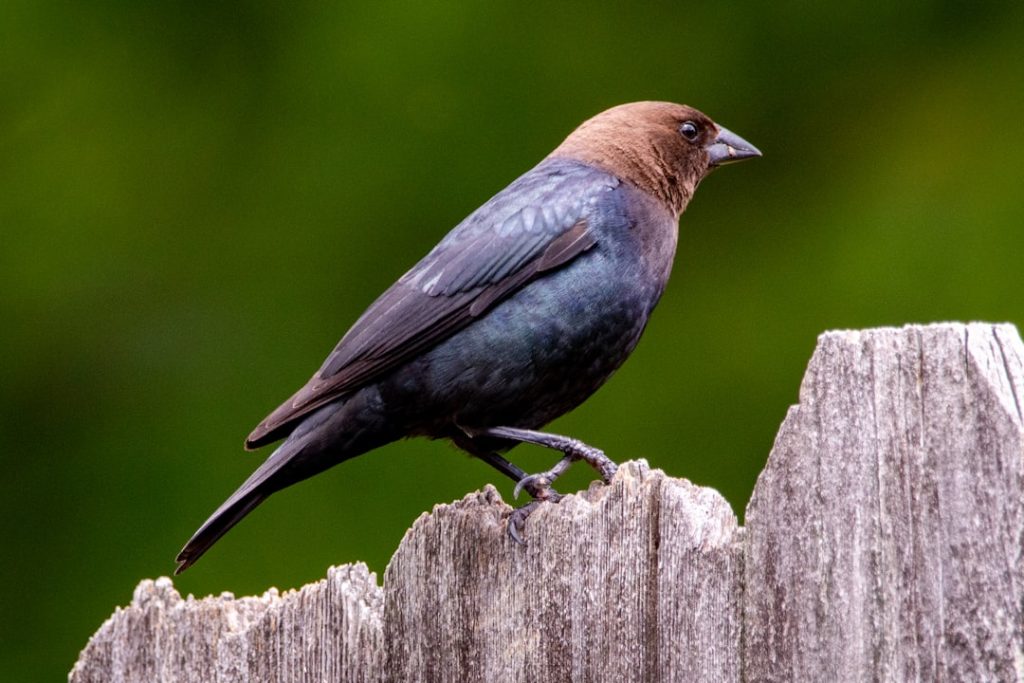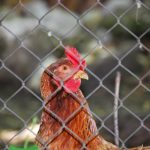When considering keeping chickens in a neighborhood with a Homeowners Association (HOA), it is crucial to understand the regulations and guidelines set forth by the HOA. These regulations are put in place to maintain the aesthetic appeal and property values of the neighborhood, as well as to ensure the peace and harmony of the community. It is important to carefully review the HOA’s governing documents, including the covenants, conditions, and restrictions (CC&R), as well as any specific guidelines or rules related to keeping poultry.
Some HOAs may have strict regulations prohibiting the keeping of chickens altogether, while others may have specific guidelines regarding the number of chickens allowed, coop placement, and other requirements. Understanding and adhering to these regulations is essential for a successful and harmonious chicken-keeping experience within an HOA community. In addition to reviewing the HOA regulations, it is also beneficial to communicate with the HOA board or management to gain a clear understanding of the specific requirements and any potential concerns they may have regarding keeping chickens.
By proactively engaging with the HOA, it may be possible to address any concerns and work towards finding a mutually beneficial solution that allows for responsible chicken keeping while respecting the regulations and standards of the community. Ultimately, understanding and respecting the HOA regulations is the first step towards successfully integrating chicken keeping into an HOA neighborhood.
Table of Contents
Key Takeaways
- Understanding HOA regulations:
- Research and understand your HOA regulations before getting chickens.
- Check for any restrictions on the number of chickens, coop placement, and noise levels.
- Choosing the right chicken breeds:
- Consider docile and quiet breeds like Silkies or Bantams for urban settings.
- Research breeds that are known for good egg production and adaptability to your climate.
- Building a chicken coop that meets HOA standards:
- Design a coop that is aesthetically pleasing and blends in with the surroundings.
- Ensure the coop is well-ventilated and secure to prevent odors and predators.
- Managing noise and odor:
- Keep the coop clean and use odor-absorbing materials like pine shavings.
- Minimize noise by choosing quiet breeds and providing entertainment for the chickens.
- Educating neighbors about chicken keeping:
- Communicate with neighbors about your plans and address any concerns they may have.
- Offer to share fresh eggs with neighbors as a way to build goodwill.
- Implementing proper waste management:
- Compost chicken waste to create nutrient-rich fertilizer for your garden.
- Use a deep litter method in the coop to naturally break down waste and reduce odors.
- Maintaining a clean and attractive backyard:
- Regularly clean the coop and surrounding area to prevent odors and pests.
- Incorporate landscaping and fencing to create a visually appealing chicken area.
Choosing the right chicken breeds
Docile and Quiet Breeds
Some chicken breeds are known for their gentle nature, quiet demeanor, and ability to thrive in confined spaces, making them well-suited for backyard chicken keeping in a residential neighborhood. Breeds such as Silkies, Bantams, and Easter Eggers are known for their friendly disposition and relatively quiet nature, making them ideal choices for urban or suburban settings.
Considering Egg-Laying Abilities
Selecting breeds that are known for their egg-laying abilities can be beneficial for those interested in maintaining a small flock for fresh eggs. It is essential to consider the specific needs and characteristics of different chicken breeds when choosing the right ones for an HOA community. Factors such as noise level, temperament, egg production, and overall suitability for backyard environments should all be taken into account when selecting breeds.
Ensuring a Positive Experience
By choosing breeds that are well-suited for residential settings and align with the guidelines set forth by the HOA, chicken keepers can help ensure a positive experience for themselves and their neighbors while enjoying the many benefits of keeping chickens.
Building a chicken coop that meets HOA standards

When building a chicken coop in an HOA community, it is essential to ensure that the coop meets the standards and guidelines set forth by the HOThe coop should be designed to be aesthetically pleasing and in line with the architectural style of the neighborhood, while also providing a safe and comfortable environment for the chickens. It is important to carefully review any specific requirements or restrictions related to coop construction, including size, placement, materials, and overall appearance. Working with a professional contractor or designer who is familiar with HOA regulations can be beneficial in ensuring that the coop meets all necessary standards.
In addition to meeting HOA standards, it is important to prioritize the functionality and welfare of the chickens when designing and building a coop. This includes providing adequate space, ventilation, nesting boxes, and roosting areas to accommodate the needs of the flock. Incorporating features such as secure fencing, predator-proofing measures, and easy access for cleaning and maintenance can also contribute to a well-designed and functional coop.
By carefully planning and constructing a coop that meets both the HOA standards and the needs of the chickens, chicken keepers can create a harmonious and compliant environment within their neighborhood.
Managing noise and odor
One of the primary concerns associated with keeping chickens in an HOA community is managing noise and odor to ensure minimal impact on neighbors. While some chicken breeds are naturally quieter than others, it is important to take proactive measures to minimize noise levels from crowing, clucking, and other vocalizations. This can include selecting quieter breeds, providing enrichment and distractions to reduce boredom and vocalization, and implementing sound-absorbing materials within the coop.
Additionally, maintaining a clean and well-maintained coop environment can help reduce odors associated with chicken keeping. Proper waste management is also crucial for minimizing odor and maintaining a clean environment within an HOA community. This includes regularly cleaning and removing soiled bedding, managing composting materials, and implementing effective waste disposal practices.
Utilizing odor-neutralizing products or natural remedies such as diatomaceous earth can also help mitigate odors associated with chicken keeping. By taking proactive steps to manage noise and odor, chicken keepers can help ensure a positive experience for themselves and their neighbors while adhering to HOA regulations.
Educating neighbors about chicken keeping
Educating neighbors about the benefits and responsibilities of chicken keeping can help foster understanding and support within an HOA community. This can include sharing information about the care and welfare of chickens, as well as addressing any concerns or misconceptions that neighbors may have about noise, odor, or other potential issues. Open communication and transparency about the intentions and practices of chicken keeping can help build trust and cooperation within the neighborhood.
Hosting informational sessions or inviting neighbors to visit the chicken coop can provide firsthand exposure to responsible chicken keeping practices and dispel any myths or concerns they may have. Additionally, being receptive to feedback and addressing any legitimate concerns raised by neighbors can help maintain positive relationships within the community. By proactively educating neighbors about chicken keeping and fostering open communication, chicken keepers can work towards creating a supportive and harmonious environment within their HOA community.
Implementing proper waste management

Composting: A Key to Minimizing Waste
A well-designed composting system can convert organic waste into valuable fertilizer, minimizing odors and reducing environmental impact.
Maintaining a Clean and Tidy Backyard
Regular cleaning and maintenance of the coop area, as well as prompt removal of soiled bedding and waste materials, can contribute to a clean and tidy backyard environment. Additionally, proper disposal of food scraps, recycling materials, and maintaining a well-organized outdoor space are also important aspects of waste management.
Sustainable Practices for a Greener Backyard
Implementing sustainable practices such as rainwater harvesting, using natural pest control methods, and incorporating native plants can contribute to a more environmentally friendly backyard setting. By prioritizing proper waste management practices, chicken keepers can create a clean, attractive, and environmentally conscious backyard within their HOA community.
Maintaining a clean and attractive backyard
Maintaining a clean and attractive backyard environment is essential for integrating chicken keeping into an HOA community in a positive and respectful manner. This includes regular maintenance of the coop area, yard space, and any outdoor structures to ensure they are well-kept and aesthetically pleasing. Implementing landscaping features such as garden beds, decorative fencing, or natural screening can help enhance the visual appeal of the backyard while providing additional benefits such as privacy or shade.
In addition to regular maintenance, it is important to prioritize cleanliness and organization within the backyard environment. This includes promptly addressing any spills or messes, properly storing supplies and equipment, and minimizing clutter or visual distractions. Creating designated areas for activities such as gardening, outdoor dining, or recreational space can help maintain a well-organized and functional backyard setting.
By prioritizing cleanliness and organization within the backyard environment, chicken keepers can contribute to a visually appealing and harmonious neighborhood within their HOA community. In conclusion, integrating chicken keeping into an HOA community requires careful consideration of regulations, responsible practices, open communication with neighbors, and proactive measures to maintain a clean and attractive environment. By understanding HOA regulations, choosing suitable chicken breeds, building compliant coops, managing noise and odor, educating neighbors about chicken keeping, implementing proper waste management practices, and maintaining a clean backyard setting, chicken keepers can create a positive experience for themselves and their neighbors while adhering to HOA standards.
With thoughtful planning and responsible practices, it is possible to enjoy the many benefits of keeping chickens within an HOA community while contributing to a harmonious neighborhood environment.
If you’re looking for more information on how to keep chickens in an HOA, you might want to check out this article on creating a garden chicken coop from Poultry Wizard. This article provides helpful tips and advice on how to design a coop that is both functional and aesthetically pleasing, which is important when living in a community with strict regulations. (source)
FAQs
What is an HOA?
An HOA, or Homeowners Association, is a governing body that sets and enforces rules and regulations for a community or neighborhood.
Can I keep chickens in an HOA?
Whether or not you can keep chickens in an HOA depends on the specific rules and regulations set by the HOA. Some HOAs may allow chickens with certain restrictions, while others may prohibit them entirely.
How can I find out if my HOA allows chickens?
You can find out if your HOA allows chickens by reviewing the HOA’s governing documents, such as the covenants, conditions, and restrictions (CC&Rs), and by contacting the HOA board or management company directly.
What are some common restrictions for keeping chickens in an HOA?
Common restrictions for keeping chickens in an HOA may include limits on the number of chickens allowed, requirements for coop placement and design, noise regulations, and waste management guidelines.
What should I do if my HOA does not allow chickens?
If your HOA does not allow chickens, you can work with the HOA board and fellow homeowners to propose changes to the rules and regulations. This may involve attending HOA meetings, gathering support from other residents, and presenting a well-researched and thoughtful proposal.
Are there any alternatives to keeping chickens in an HOA?
If keeping chickens is not allowed in your HOA, you may consider other options such as participating in a community garden, joining a local farm share program, or volunteering at a nearby animal sanctuary to satisfy your interest in raising chickens.
Meet Walter, the feathered-friend fanatic of Florida! Nestled in the sunshine state, Walter struts through life with his feathered companions, clucking his way to happiness. With a coop that’s fancier than a five-star hotel, he’s the Don Juan of the chicken world. When he’s not teaching his hens to do the cha-cha, you’ll find him in a heated debate with his prized rooster, Sir Clucks-a-Lot. Walter’s poultry passion is no yolk; he’s the sunny-side-up guy you never knew you needed in your flock of friends!







